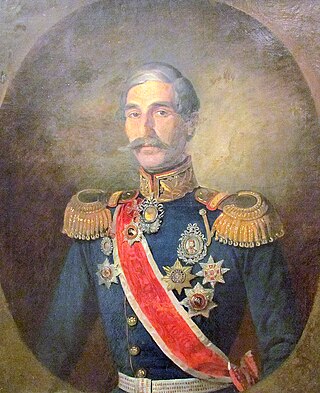
Alexander Karađorđević was the prince of Serbia between 1842 and 1858 and a member of the House of Karađorđević.

Zlatibor is a mountainous region situated in the western part of Serbia.
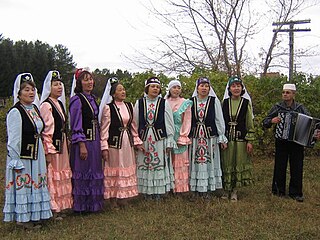
Siberian Tatars or Sibirs/Sybyrs are the indigenous Turkic-speaking population of the forests and steppes of Western Siberia, originating in areas stretching from somewhat east of the Ural Mountains to the Yenisey River in Russia. The Siberian Tatars call themselves Yerle Qalıq, to distinguish themselves from more recent Volga Tatar immigrants to the region.
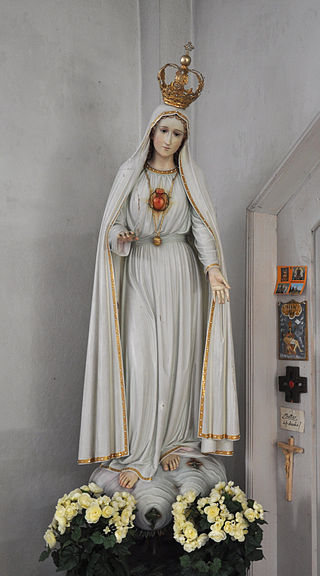
The consecration of Russia to the Immaculate Heart of Mary by a reigning pope was requested during a Marian apparition by Our Lady of Fátima on 13 July 1917, according to Lúcia dos Santos, one of the three visionaries who claimed to have seen the apparition. Sister Lucia said that at different times the Blessed Virgin Mary had given her a message of promise that the consecration of Russia to the Immaculate Heart of Mary would usher in a period of world peace.
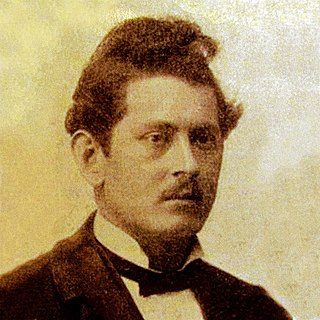
Simeon Roksandić was a Serbian sculptor and academic, famous for his bronzes and fountains. He is frequently cited as one of the most renowned figures in Serbian and Yugoslavian sculpture.
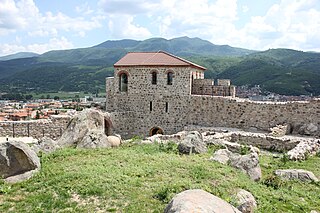
Peshtera is a town in the Rhodope Mountains, southern Bulgaria. It is located in Pazardzhik Province near the towns of Batak and Bratsigovo. The town is the third largest in the province after Pazardzhik and Velingrad and is the forty-fifth largest in Bulgaria. It is the administrative center of the municipality Peshtera. According to the 2021 census, Peshtera has a population of 15,175 inhabitants. At about 5 km to the south, along the road to Batak, is one of the most visited caves in Bulgaria — Snezhanka. Near the town is located the Peshtera Hydroelectric Power Station. The town is well known for producing the alcohol beverage mastika under the brand Peshterska.
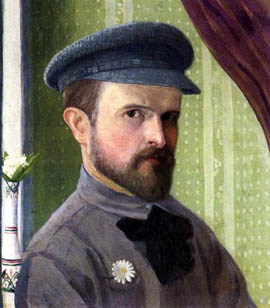
Ivan Vasilievich Kliun, or Klyun, born Klyunkov was a Russian Avant-Garde painter, sculptor and art theorist, associated with the Suprematist movement.
Filip Đorđević is a Serbian professional footballer who plays as a forward.
The Baraba are a sub-group of Siberian Tatars and the indigenous people of the Ob-Irtysh interfluve. After a strenuous resistance to Russian conquest and much suffering at a later period from Kyrgyz and Kalmyk raids, they now live by agriculture — either in separate villages or along with Russians. Some of them still speak Baraba dialect of Siberian Tatar language. They traditionally live on the Baraba steppe.

North Macedonia–Russia relations are bilateral relations between the Republic of North Macedonia and the Russian Federation. North Macedonia has an embassy in Moscow and a consulate in St. Petersburg, while Russia has an embassy in Skopje and consulates in Bitola and Ohrid. Chargé d'Affaires of North Macedonia in Moscow is Olivera Čauševska-Dimovska, while the Russian ambassador in Skopje is Sergey Bazdnikin.

Persida Karađorđević née Nenadović was the Princess consort of Serbia as the wife of Alexander Karađorđević, who ruled the Principality of Serbia from his election on 14 September 1842 until his abdication on 24 October 1858. She was the mother of ten children, including future king Peter I of Serbia, who succeeded to the throne after the assassination of King Alexander I, the last ruler of the Obrenović dynasty.
The International Cinematographers Film Festival "Manaki Brothers" is an annual international film festival organized by the Macedonian Film Professionals Association (MFPA). The festival is held in Bitola, the town where most of the activities of the Aromanian brothers Yanaki and Milton Manaki were organized. They were the filmmakers, who in 1905 filmed in Avdela the first motion pictures in the Ottoman Balkans. Each year the festival is supported by the Ministry of Culture of Macedonia and the President of North Macedonia. The award of the festival is Camera 300 that given to the year's best motion pictures chosen by the festival's film committee. The Manaki Film Festival has been hosted at the Center of culture, with screenings at the Big Hall, located in the center of Bitola and has been attended by celebrities such as Michael York, Charles Dance, Victoria Abril, Daryl Hannah, Catherine Deneuve, Isabelle Huppert, Julliette Binoche, Aleksei Serebryakov, Bruno Ganz, Claudia Cardinale, Fatih Akin.
Petar J. Popović was a prominent Serbian architect. In addition to notable architectural achievements, Petar Popović made a great contribution to Serbian heraldry and vexillology. He was also a painter.
Jeftimije Popović was a Serbian painter whose work is representative of the Neo-Classicism style of the period. He started out as a portrait painter, though later commissions for religious themes took precedence.
Milan Smiljanic was a protopriest of the Serbian Orthodox Church, a participant in the Balkan Wars and the People's Liberation War, and a socio-political worker of the People's Republic of Serbia. His voice was recorded on the Voyager Golden Record saying: "Желимо вам све најлепше са наше планете".
Georgije Letić was the bishop of the Serbian Orthodox Church in what is today Romania. He was a progressive educator who promoted co-education.
Anđelija Stančić Spajić (Serbian Cyrillic: Анђелија Станчић was a Serbian writer, teacher, and participant in the First World War. She was born in Šid, Srem County, Vojvodina in 1865, and died in Belgrade, Serbia, Yugoslavia in 1955.

Paul's epistles are Paul the Apostle's letters, which are among the most important parts of New Testament. In those letters are told old Christian dogmas, which preceded the development of the religion. The first versions of The epistles are preserved in the form of manuscripts. They are created between X-XIV centuries in various churches and monasteries. Under those circumstances, they differ from each other both sides in content (structural) and morphological-orthographic. As soon as the state symbols were formed in Georgia, the country chose the European path, striving for its values. In the second and third centuries, Christianity evolved in Europe, which changed their political life as well. Therefore, for Georgia, Christianity was not only a precondition for religion but also for political stability.
Gligorije Trlajić was a Serbian writer, poet, polyglot and professor of law at the universities of St. Petersburg and Kharkiv (Harkov). He is also known as Gregor Terlaic in German encyclopedias.
Vujan Monastery is a Serbian Orthodox Church monastery in Prislonica, Serbia. It is included in the list of cultural monuments of great importance of the Republic of Serbia. The monastery is located on the wooded slopes of Mount Vujan.















